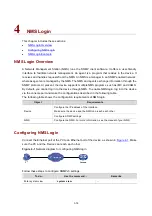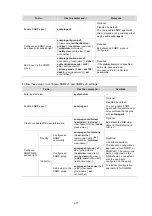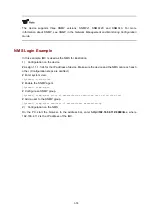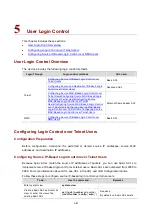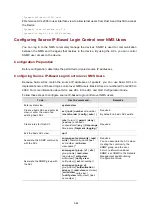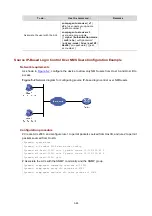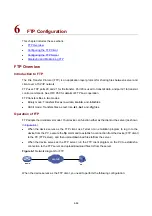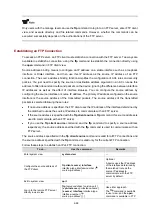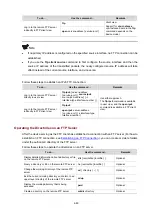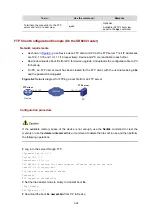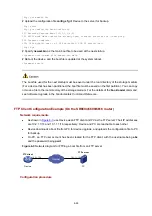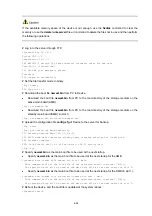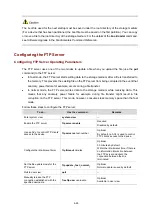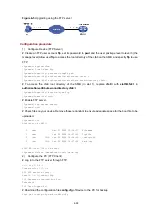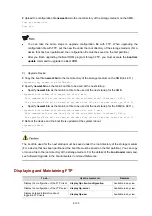
6-87
Table 6-1
Configuration when the device serves as the FTP client
Device
Configuration
Remarks
Device (FTP client)
Use the
ftp
command to establish the
connection to the remote FTP server
If the remote FTP server supports anonymous
FTP, the device can log in to it directly; if not,
the device must obtain the FTP username and
password first to log in to the remote FTP
server.
PC (FTP server)
Enable FTP server on the PC, and
configure the username, password,
user privilege level, and so on.
—
When the device serves as the FTP server, you need to perform the following configuration:
Table 6-2
Configuration when the device serves as the FTP server
Device
Configuration
Remarks
Enable the FTP server function
Disabled by default.
You can use the
display
ftp-server
command to view
the FTP server configuration on the device.
Configure authentication and
authorization
Configure the username, password, and authorized
directory for an FTP user.
The device does not support anonymous FTP for
security reasons. Therefore, you must set a valid
username and password. By default, authenticated users
can access the root directory of the device.
Device (FTP
server)
Configure the FTP server
operating parameters
Parameters such as the FTP connection timeout time
PC (FTP client)
Use the FTP client program to
log in to the FTP server.
You can log in to the FTP server only after you input the
correct FTP username and password.
z
Make sure that the FTP server and the FTP client can reach each other before establishing the
FTP connection.
z
When you use IE to log in to the device serving as the FTP server, some FTP functions are not
available. This is because multiple connections are established during the login process but the
device supports only one connection at a time.
Configuring the FTP Client




